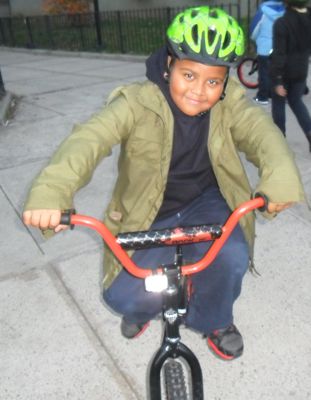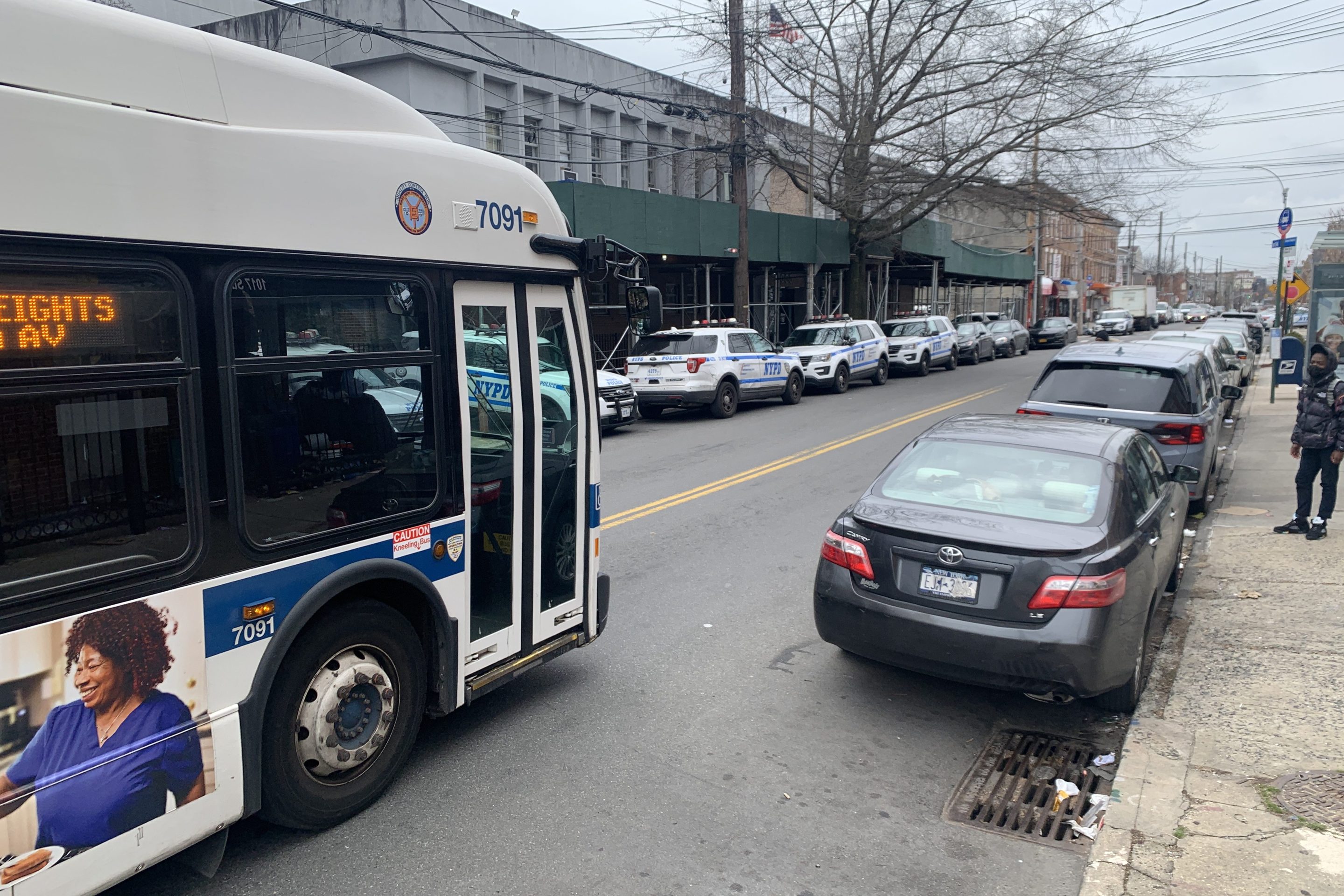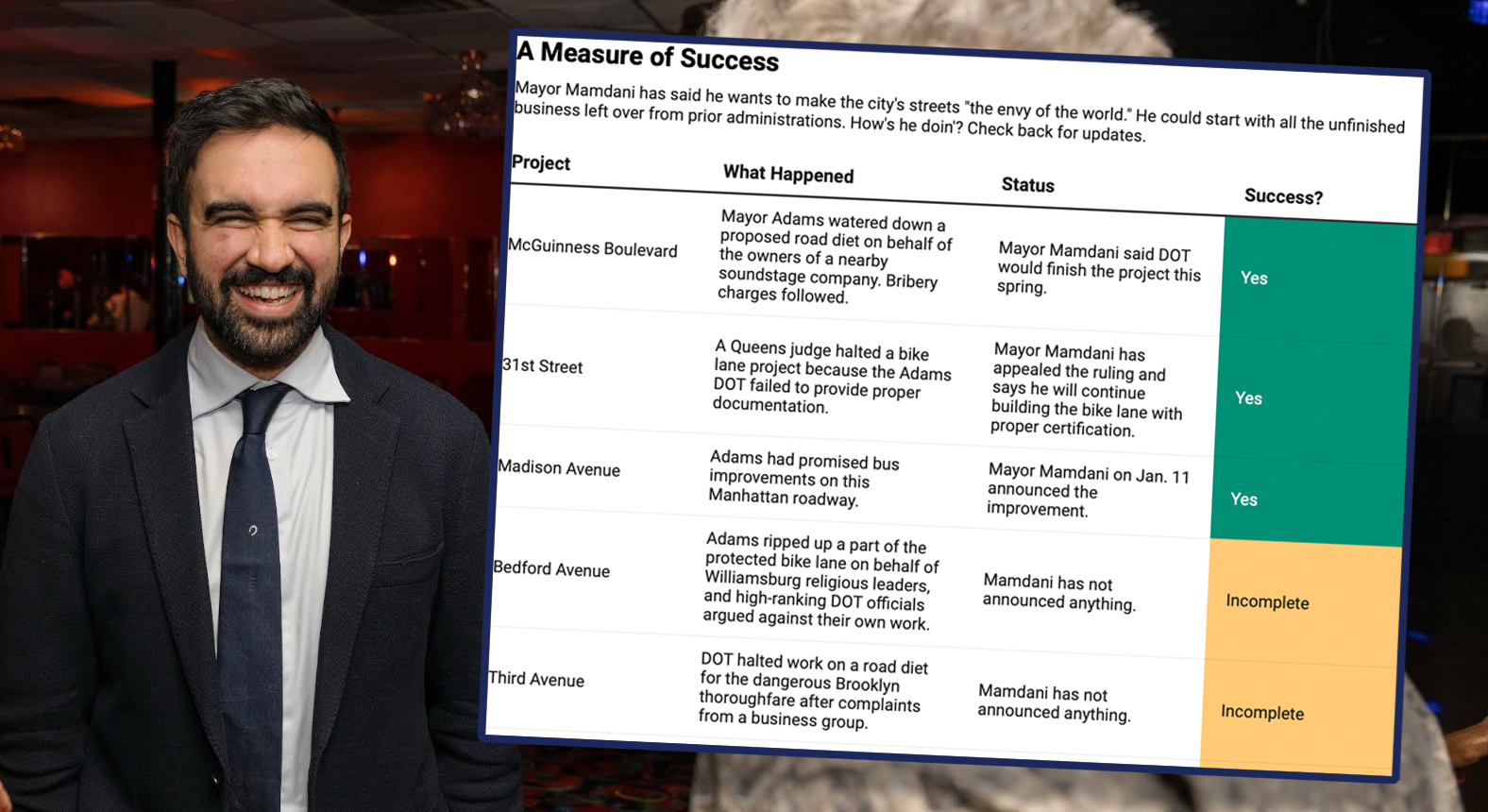
At a long and at points contentious public hearing last night, a clear majority of speakers came out in support of protected bike lanes on First and Second Avenues in East Harlem. In addition to local residents, the public health community came out in force to demolish the opposition's claim that installing bike lanes could worsen the neighborhood's asthma rates.
Community Board 11 had previously voted overwhelmingly in favor of the lanes, then rescinded its vote in the face of business opposition. Last night's testimony sets the stage for another vote on the project, perhaps in January.
More than 30 people spoke in support of the bike lanes, while only seven spoke against. The larger audience, a packed room of over one hundred, seemed to have a similar proportion of supporters to opponents. Local activist James Garcia also brought a petition with 850 signatures in support of the bike lanes, an amount he said only took seven hours to gather.
The community's elected leadership continued their sustained fight to bring safer streets to East Harlem.
"Our public roadways are a public amenity that belong to every single individual who lives in our community," said Council Member Melissa Mark-Viverito, who stayed for the full three-hour hearing. She argued that building complete streets not only protects people who already bike but also helps seniors cross the street and lets parents feel comfortable having their kids get on bikes. "I believe very strongly that this is a social justice issue. Our community doesn't deserve any less than any other community, and our children don't deserve any less."
"As cycling becomes more popular among city dwellers," State Senator José Serrano said in a prepared statement read by an aide, bike riders "deserve to have safe travel like pedestrians or drivers."
The bike lanes had two strong bases of support in the neighborhood's student population and in the public health community. Speaking first last night in order to be able to make it home for bedtime were seven elementary school students from the Concrete Safaris afterschool program. "Biking is good because you don't get diabetes and pollute the air," said a girl named Abigail. "I think East Harlem should have bike lanes. You get a ticket if you ride on the sidewalk and it's extra-scary when you have to ride in a car lane," argued Dwayne Marshall.
Three students from the Coalition School for Social Change, a high school located on First Avenue, also spoke in favor of the lane. They had participated in a DOT-led visioning process for the street and saw the bike lanes as part of a larger project to enliven the street and improve safety. "We would love them," said one student. "Please approve them so that we can ride our green wheels safely to schools."
Last night's speakers also debated the public health implications of installing protected bike lanes. East Harlem suffers from elevated rates of asthma, diabetes and obesity, so health is a top concern for most families there. Erik Mayor, the owner of local business Milk Burger, again appealed to those concerns in arguing against the bike lanes. "The traffic conditions will get worse. It's common sense," he claimed. "Greater congestion creates greater emissions from vehicles."
However, a parade of experts each testified that the lanes would, in fact, improve public health. "There is no evidence to suggest that bike lanes increase asthma rates," said Joanne Eichel of the New York Academy of Medicine. "On the contrary, we know that riding a bike has extraordinary health benefits."
Discussing both the expected safety improvements from the protected lanes and pedestrian refuge islands and the increased physical activity that comes from more walking and cycling, Eichel said the installation of the bike lanes would be "a major step toward improving the health of people of all ages in the community."
La'Shawn Brown-Dudley, the deputy director of the Department of Health's local district public health office, said her office hadn't seen bike lanes worsen asthma anywhere in the city, but did see them as a way of encouraging healthy lifestyles. "We at the Health Department support the inclusion of these bike lanes," she said. The bike lanes also won endorsements from Javier Lopez, the director of the New York City Strategic Alliance for Health, and two Mt. Sinai pediatricians, Kevin Chatham Stevens and Cappy Collins.
The opposition to the bike lane was fierce, if not widespread, and included every anti-bike lane trope in the book. "I love bicycles, it's just not for First Avenue," argued Frank Brija, the owner of Patsy's Pizzeria who wanted to move the lanes to Pleasant and Paladino Avenues, which run for ten non-contiguous blocks east of First.
Mayor not only argued that the bike lanes would worsen traffic, but that they would block ambulances, prevent plowing, endanger senior citizens and sit unused. Rejecting evidence that the lanes work well in other countries and other New York neighborhoods, Mayor responded, "That's not El Barrio, that's not East Harlem, that's not Spanish Harlem." Mayor even cited the opposition of former transportation commissioner Iris Weinshall to the Prospect Park West bike lane to claim that DOT's data couldn't be trusted.
When bike lane opponent Pablo Guzman started to complain that bike lane supporters -- the elected officials, DOT representatives, and students -- were allowed to speak ahead of the regular order of speakers, the event briefly broke out into chaos. Charges of slander flew and the core of bike lane opposition led by Brija and Mayor stormed out of the room.
Mostly, though, the environment was one of thoughtful speeches and good nature. Harry Bobbins, a cyclist and bike lane supporter, even brought two Patsy's pizzas in to show the bike community's support for local businesses.
One issue raised that clearly needs more work, for example, is the parking regulation along First and Second Avenue. Though the installation of the bike lanes will include some new loading zones, the majority of the parking along the two avenues will remain unmetered alternate side parking, which DOT Borough Commissioner Margaret Forgione called "very unusual for a commercial corridor." The lack of meters means double-parking is worse than it needs to be and finding a short-term parking space much harder. Metering the spaces "would be a tremendous benefit," said Forgione, but not an action DOT will undertake without community support.
Altering the parking regulations was also a key post-implementation adjustment put into place along Columbus Avenue, one which helped calm an angry business community and create a popular new piece of infrastructure. "We had a learning curve," said Mel Wymore, the former chair of Community Board 7, who spoke in favor of the bike lanes based on his experience on the Upper West Side. "I think you'll see more and more, as bike lanes become the norm in New York City, just like in Times Square, all the businesses say business actually improves because of the life on the street."
With a strong majority in support of the bike lanes, last night's public hearing probably helped build some momentum for the community board to return to its previous stance of support for the project and for DOT to eventually move forward on installation. "The vast majority of the people in this room are very supportive of the lanes," noted Forgione at the end of the hearing.
The hearing also provided a lesson for Diego Quiñones, a resident who was hit by a car while cycling on First Avenue in July. "Wow," he said. "Change is scary, huh?"





